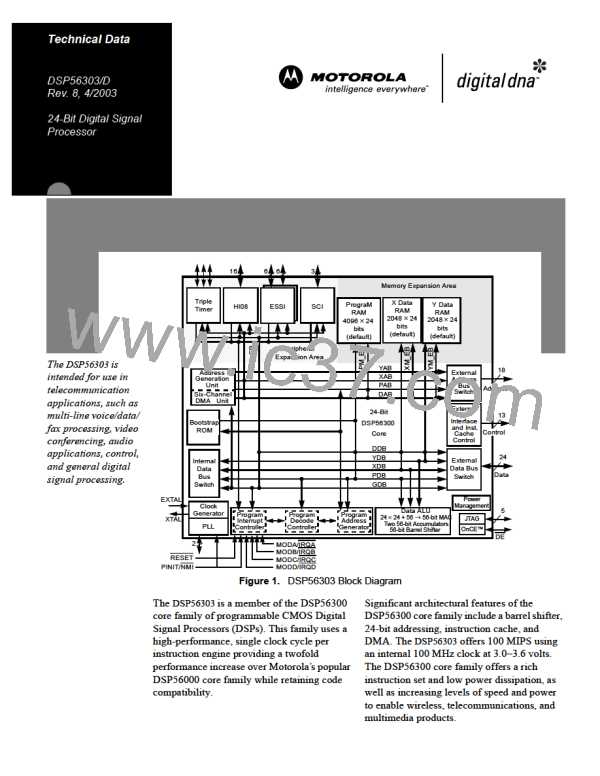Chapter 4
Design
Considerations
4.1 Thermal Design Considerations
An estimate of the chip junction temperature, T , in °C can be obtained from
J
this equation:
Equation 1: TJ = TA + (PD × RθJA
)
Where:
T
=
=
=
ambient temperature °C
A
R
package junction-to-ambient thermal resistance °C/W
power dissipation in package
θJA
P
D
Historically, thermal resistance has been expressed as the sum of a
junction-to-case thermal resistance and a case-to-ambient thermal resistance,
as in this equation:
Equation 2: RθJA = RθJC + RθCA
Where:
R
R
R
=
=
=
package junction-to-ambient thermal resistance °C/W
package junction-to-case thermal resistance °C/W
package case-to-ambient thermal resistance °C/W
θJA
θJC
θCA
R
is device-related and cannot be influenced by the user. The user controls
θJC
the thermal environment to change the case-to-ambient thermal resistance,
. For example, the user can change the air flow around the device, add a
R
θCA
heat sink, change the mounting arrangement on the printed circuit board
(PCB) or otherwise change the thermal dissipation capability of the area
surrounding the device on a PCB. This model is most useful for ceramic
packages with heat sinks; some 90 percent of the heat flow is dissipated
through the case to the heat sink and out to the ambient environment. For
ceramic packages, in situations where the heat flow is split between a path to
the case and an alternate path through the PCB, analysis of the device thermal
performance may need the additional modeling capability of a system-level
thermal simulation tool.
The thermal performance of plastic packages is more dependent on the
temperature of the PCB to which the package is mounted. Again, if the
estimates obtained from R
do not satisfactorily answer whether the thermal
θJA
performance is adequate, a system-level model may be appropriate.
4-1

 MOTOROLA [ MOTOROLA ]
MOTOROLA [ MOTOROLA ]